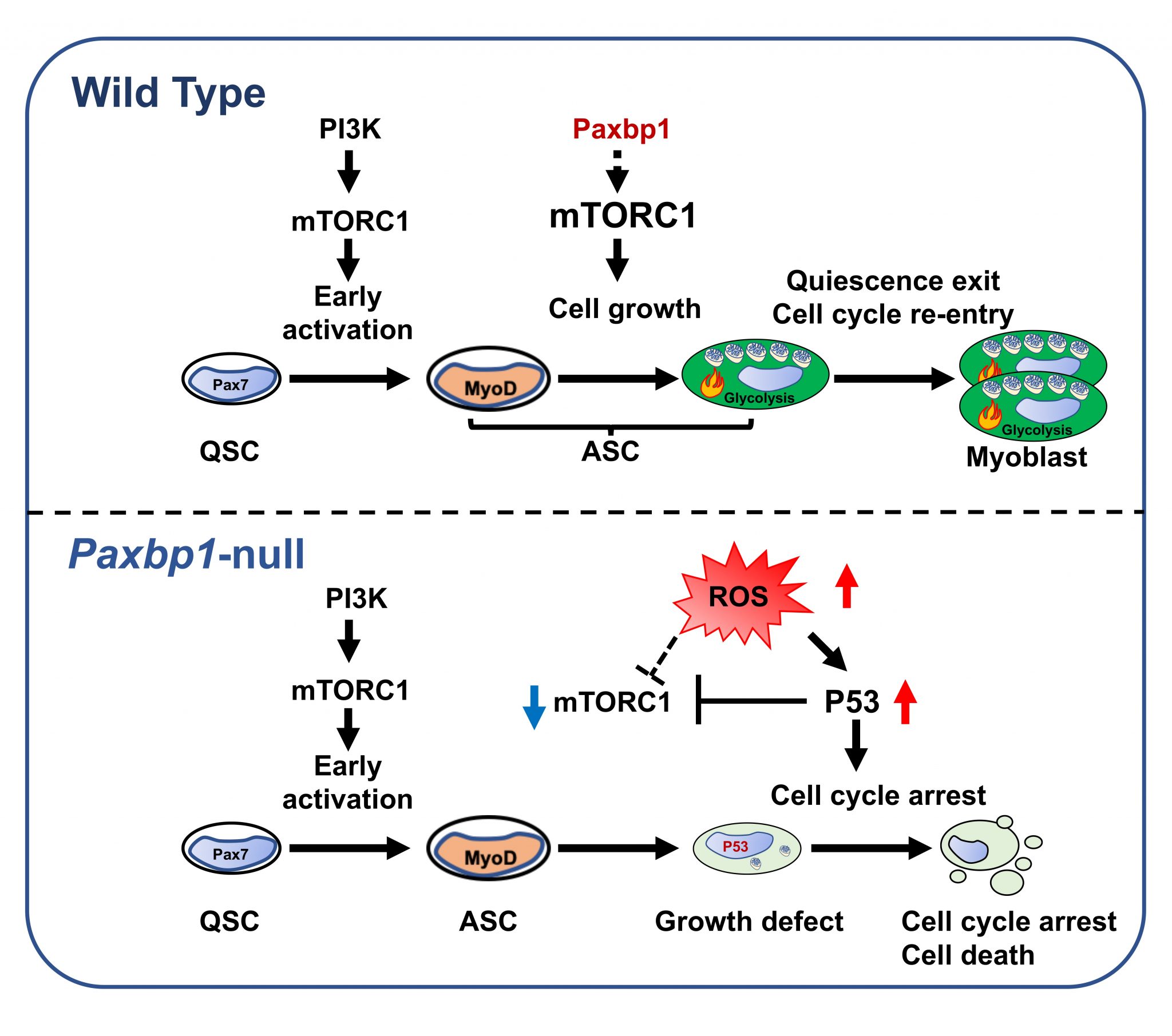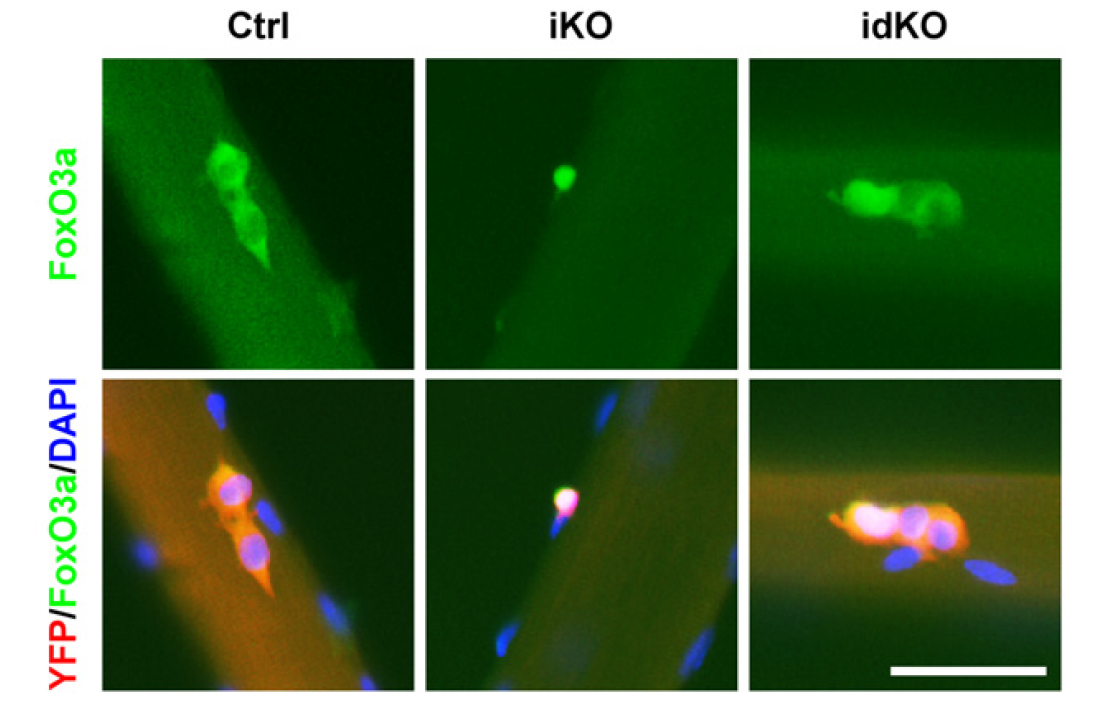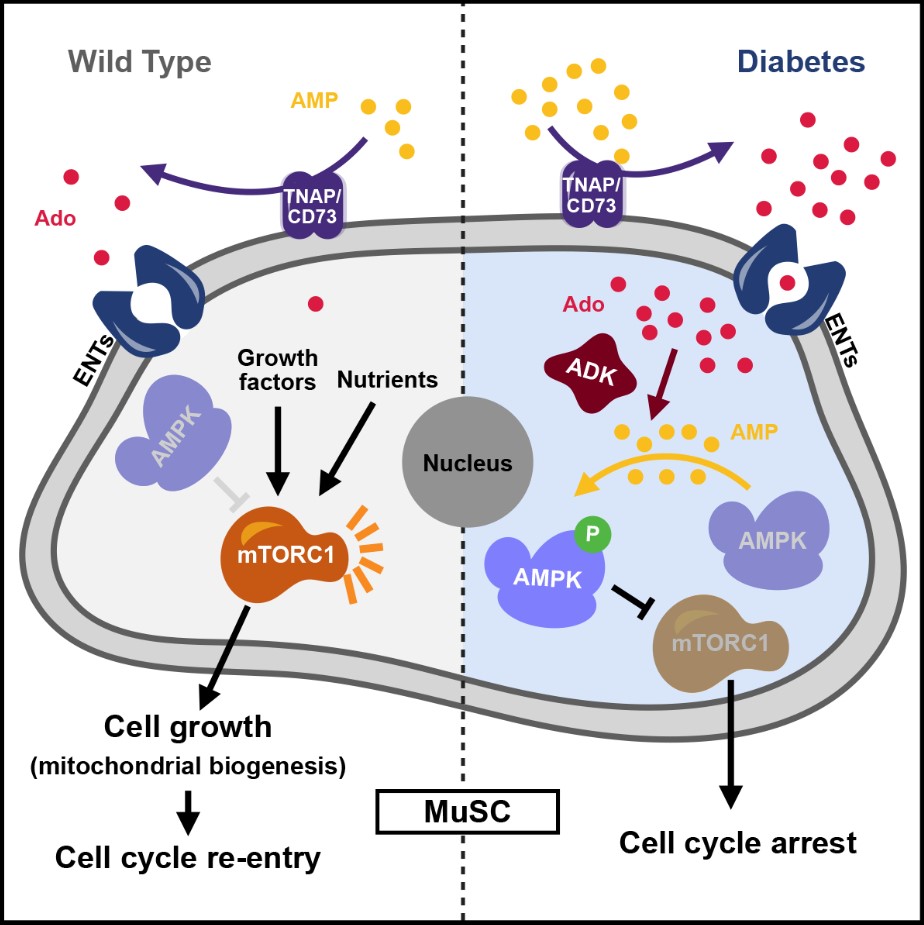Molecular regulation of muscle stem cells, myogenic differentiation, and muscle regeneration.



Regulation of Adult Muscle Stem Cells
Adult muscle stem cells, also known as muscle satellite cells (MuSC), are crucial for postnatal muscle growth and injury-induced muscle regeneration. They normally attach to the surface (or sarcolemma) of individual myofibers with both (the individual myofiber and the associated MuSC) being wrapped around by basal lamina. Adult MuSC predominantly exist in a quiescent state in normal resting muscles. Upon muscle injury, quiescent MuSC will undergo activation and exit quiescence, re-enter the cell cycle to proliferate and self-renew, and ultimately start differentiation and fusion to orchestrate muscle regeneration. Dysregulation of any of these steps could adversely affect the functions of MuSC and injury-induced muscle regeneration.
We are interested in understanding how MuSC are regulated during maintenance in uninjured muscles and during regeneration in injured muscles. Our recent work identified two critical checkpoints during early activation of MuSC before they re-enter the cell cycle. The first one is regulated by the PI3K-mTORC1-FoxO-dependent signalling pathway. It determines whether the quiescent MuSC can be activated or not (Wang, et al., EMBO J, 2018). The second checkpoint is regulated by Paxbp1, a poorly-studied nuclear protein that was first identified and characterized by our group (Diao, et al., Cell Stem Cell, 2012). It controls whether the PI3K-activated MuSC can undergo a further mTORC1-dependent cell growth phase before they are ready to re-enter the cell cycle (Zhou, et al., PNAS, 2021)
In addition to the mechanisms that regulate adult MuSC in normal muscles, we are also interested in understanding whether and how MuSC are affected under certain pathological conditions. (Zhu et al., Cell Rep. 2016; Han, et al., Cell Rep, 2022)
Paxbp 1 Hetz
Paxbp 1 KO
Start your adventure of studies
Join us